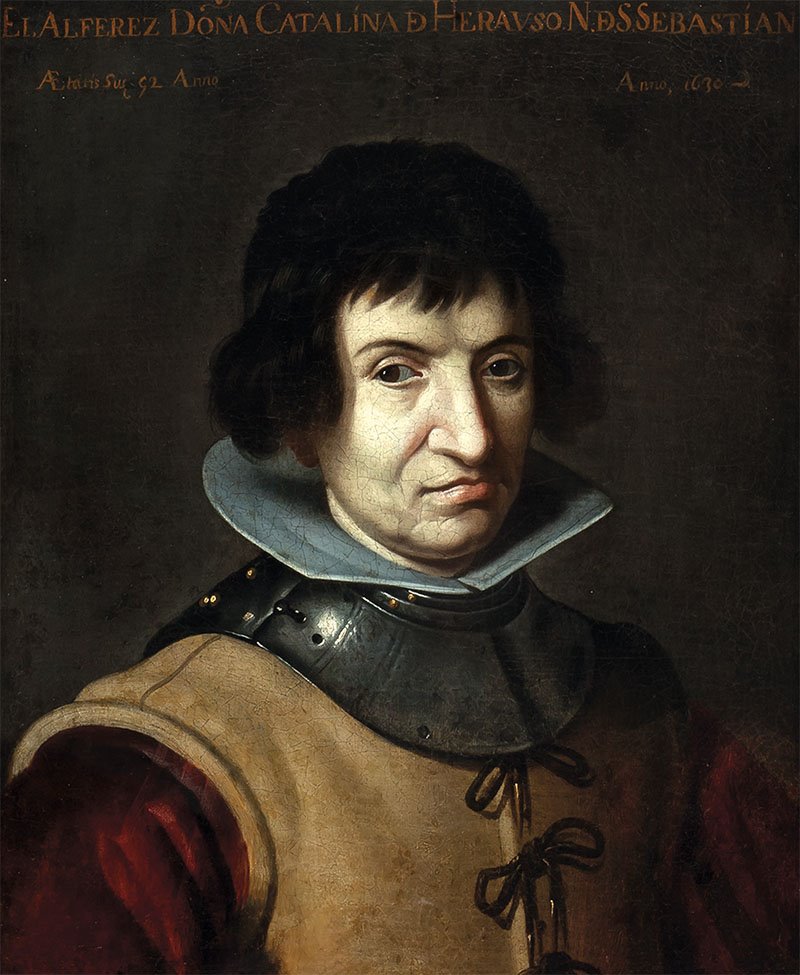
There are few memoirs that read as if they were a work of fiction. Catalina de Erauso’s is one of them. After escaping the dominican convent where she was a nun, Erauso, fled the Basque country, traveled Spanish territories, and ended up in the New World. Erauso then returned to Spain, where she was granted an appointment with Spanish monarch Phillip IV where he awarded her a life pension for her services to the crown. She presented herself to Pope Urban the Eighth, who gave her an appointment to grant her a papal disposition to continue dressing as a man provided she remained a virgin. She then disappeared? returned to South America? Stayed in Spain? No one knows for sure, but it is said that she was seen last in Mexico running mules.
So many questions arise after reading the story of La Monja Alferez. What where her motivations? Why dress like a man? Why didn’t she reveal herself to family when she encounter them? Why choose such a solitary lifestyle? What does her story reveal about the Spanish society of the 17th century?… I could keep on going but I’d just succeed in boring you.
Catalina de Erauso’s memoirs are not only interesting because of her Tomb Raider-esque adventures, or the fact she cross-dressed in a time where it was not only, frowned upon, but dangerous to do so, but because she embodies the exemplary conquistador. She was a real manifestation of what Spaniards believed to be the life of a migrant to the new world. In other words, the 1600’s “American dream”. Erauso became a traveling soldier, merchant, muleteer, gambler, murderer and conquistador. She returned to Spain where she was honored by the king. Talked to the Pope. Was granted a disposition to cross-dress. But, she was a woman in a time where women had little to no rights.
The curious thing is, as Michele and Gabriel Stepto (translators of Erauso’s memoir) put it,
“Catalina’s focus was on being a Spanish man, a soldier. It would be a misreading to see her as anything other than the perfect colonialist, manipulative, grasping, and at moments out and out bigoted. To align Catalina, as a cross-dressing “other,” with the victims of colonialism is to miss the truth that the rewards of her transformation were gained almost wholly at their expense.”
Catalina did not see herself as a woman dressed as a man, but as a conquistador. And I guess, that’s the way we should look at this memoir. Not the memoir of a cross dressing nun, but that of a conquistador’s adventures in the new world.